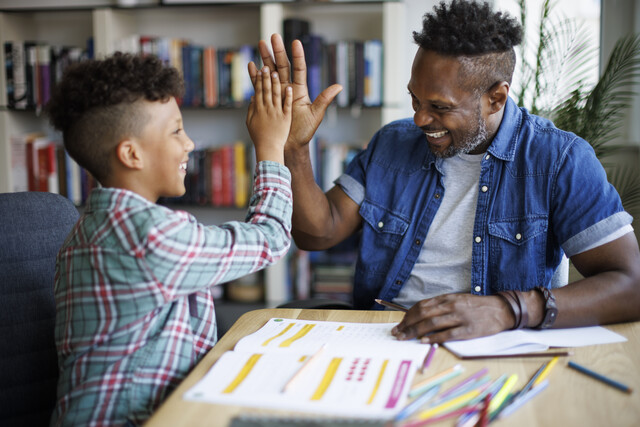Ways to Talk to Children About Bullying
"Having a good discussion is like having riches." – Kenyan Proverb
In this article we are going to look more into one of the most effective tools against bullying, which is communication. As with many things in life, communication can go a long way toward helping to bring an end to bullying. It can help prevent it, as well as end it if it does get started.
Even if bullying hasn't been an issue in your school, and especially if it hasn't yet, you should teach children about bullying. Prevention is the best route and the best way to help prevent it is to teach kids about it. That way they can identify what it is and what to do if they encounter it.
Communities that focus on preventative programs are more likely to be successful in helping to curb the problem, as well as address it if it does arise. The more kids can identify bullying and know how to prevent and address it, the better off the community will be as a whole.
Communication comes in multiple forms. This is important to keep in mind when trying to find ways to teach children about bullying. Children learn in different ways. Some learn through hands-on means, while others learn from reading, writing, or through verbal means. Because of this, it is ideal to try and keep that in mind when determining the best way to approach bullying prevention education with your children or in your classroom.
If you are teaching one child about bullying, try to identify their learning style, and choose a route that you think will be the most effective for them. If you are teaching a group of children it is important to try and include several different learning styles, so that the message reaches more of them.
Did you know?
There are even games that can be used to help teach children about bullies. Doing a quick online search for bullying games will give you several results, including one at PBSKids.org, where children will have the opportunity to try and outwit the bully, by answering bullying-related questions and making wise decisions. So if you have a child that likes the computer, or playing video games, you may even want to find a bullying game they can play to help further their knowledge of the topic.
- Plays. Have children engage in a play that addresses bullying. They can even write it themselves. Once they learn their parts they can perform it for fun for their parents, or for other children, to help teach them as well.
- Books. There are plenty of children's books today that address bullying. Pick up a few from the library and read them with the children, then discuss bullying afterward. Another option is to work with children to write a book on bullying. Collectively, they can create their own bullying-themed story.
- Discussions. Simply having a discussion about what bullying is can be an effective tool. Surprisingly, many parents and teachers never bring bullying up to children, even though it's a common problem.
- Movies. Whether watching television or tuning into a movie, whenever there is bullying being shown it is a good time to discuss it. Talk to the child about the bullying that took place in the show, what could have been done, and what they thought about it.
- Role playing. Helping children understand more about bullying and how to handle being bullied, or how to help someone who is being bullied, can be as simple as role playing. When an adult spends a few minutes role playing bullying with a child that information is likely come back to them when they need it.
Without knowing what bullying looks like, many young children may not understand the whole picture. It's important to that children know what it looks like, as well as healthy ways to address it. That can only come through the process of communication. When adults discuss it with them it gives them a chance to understand what it is and learn about ways they can help bring it to an end in their school.
Talking to children about bullying is crucial. Keeping the lines of communication is open, before, during, and after any bullying takes place. The more we can have an open and honest discussion about it in our homes, schools, and communities, the more we can help keep it away from our children!


























